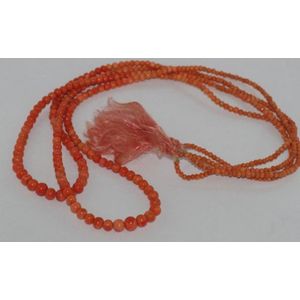Art Nouveau Jardiniere by Lily Partington, Royal Doulton
You must be a subscriber, and be logged in to view price and dealer details.
Subscribe Now to view actual auction price for this item
When you subscribe, you have the option of setting the currency in which to display prices to $Au, $US, $NZ or Stg.
- Art Nouveau Period - The Art Nouveau period was a cultural movement that emerged in the late 19th century, and was characterized by its emphasis on natural forms, flowing lines, and a decorative, ornamental style. Art Nouveau was a reaction against the ornate and heavily stylized designs of the previous era, and sought to create a new, more organic aesthetic.
Art Nouveau was characterized by its use of sinuous, curving lines, as well as a focus on natural elements such as flowers, vines, and other organic shapes. Art Nouveau designers sought to create a total work of art, in which every element of a building or object was designed to be harmonious with the overall design.
Some of the most iconic examples of Art Nouveau design include the Paris Metro entrances designed by Hector Guimard, the works of the artist Alphonse Mucha, and the architecture of Victor Horta in Brussels.
The Art Nouveau period was at its peak between 1890 and 1910, but began to decline in popularity by the start of World War I. However, Art Nouveau remains an important influence on design and art to this day, and continues to be celebrated for its emphasis on natural forms and decorative style. - Circa - A Latin term meaning 'about', often used in the antique trade to give an approximate date for the piece, usually considered to be five years on either side of the circa year. Thus, circa 1900 means the piece was made about 1900, probably between 1895 and 1905. The expression is sometimes abbreviated to c.1900.
This item has been included into following indexes:
- Partington, Lily - Royal Doulton, designers 11
- Royal Doulton (England) Series Ware - Floral 272
-
Royal Doulton (England), item types
- jardinieres 105
- Lambeth Ware, other wares 224
Visually similar items

A impressive antique William IV mahogany tambour top desk, with pull out green leather writing surface, fitted in interior, upper open shelf, single long drawer above a pair of smaller drawers, all standing on turned carved tapering legs terminating with g

19th century Indian ivory carved tusks, Highest 21 cm (approx.)

Vintage double strand pink-red coral bead, graduated in size 6 mm - 1.5 mm beads, with pink silk tassle, size: longest drop 38 cm

Regency ring with rose cut diamonds and amethyst as inspected. Total weight approx 3.2 grams
